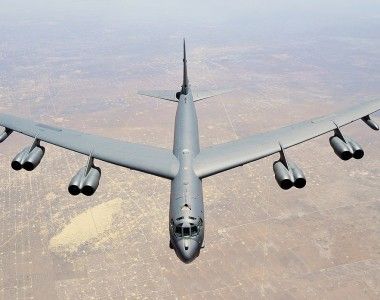Polish Drones Cooperate With Domestically Developed Communications Systems
NeoX and Atrax UAV systems which have been delivered in November 2016 to the Polish Air Force Academy in Dęblin, may be controlled thanks to the communication modules utilizing the PAXLINK-M wireless communication system developed by the Transbit Sp. z o.o Company.
Polish Air Force Academy in Dęblin has received, at the end of 2016, two sets of drones including three NeoX mini-UAVs, one package including two Atrax quad-copters and several observation systems, featuring optronic and FLIR cameras, along with four ground control stations complemented with antenna arrays. All of the aforesaid elements have been manufactured and delivered by the consortium involving the Air Force Institute of Technology, working together with the Polish Armaments Group.
The information publicized suggests that communication between the UAV and the ground control station is ensured by connectivity modules which utilize the PAXLINK-M wireless system, developed by the Polish Transbit Sp. z o.o. company. The said microwave transmission links provide bidirectional telemetry transfer, and video transfer in real time, from the drone to the ground control station.
Here, we are dealing with a communications system featuring an encryption module based on the AES-256 advanced encryption algorithm software defined radio. Thanks to the adopted SDR architecture, there is an option of easy implementation of a waveform conforming with the requirements defined by the user.
Transbit company stresses the fact that hardware structure of the PAXLINK-M connection makes it possible to conduct operations with the use of a TDD (Time Division Duplex) and mixed FDM (Frequency Division Duplex)/TDD standards. It has been noted that thanks to the PAXLINK-M’s flexibility, an option exists to implement additional functions, such as cryptography, and EW countermeasures. PAXLINK-M system may be operated within any bandwidth between 200 and 6000 MHz. Depending on the intended purpose, they may have a power of up to 10 Watts.
The communication modules designed in this way make it possible to transmit the PAL compressed video across distances of more than 20 kilometres, with the drone flying at the altitude of 500 meters. Telemetry channel is independent from the video channel, which minimizes the delay, its maximum bandwidth is defined as > 40 kb/s.
There is an option of connecting both analogue, as well as digital signal source to the module. In the former case, three PAL “composite” analogue inputs have been prepared, or a single input, operated in the “component” mode, dividing the signal into components and transmitting the aforesaid data through separate cables, which makes it possible to transmit HDTV quality imagery and limit the impact of external interference. In the latter case, two HDMI digital inputs have been prepared, allowing the user to apply even Full HD camera systems.
The video stream is compressed in line with the H264 standard, while the user also has an ability to select the compression parameters including resolution, FPS, delay between the key frames and jitter delay.
Both modules, the one airborne and the one on the ground, have been fitted with three types of communication interfaces, namely Ethernet, USB 2.0 and a serial port. The ground module additionally features a separate HDMI interface, to which a monitor may be connected. Such solution makes it possible to locally analyze the real time imagery sent from the cameras onboard the UAV.




